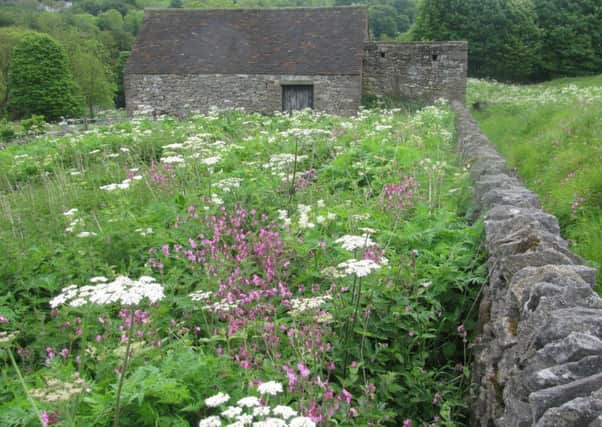COLUMN: Make your garden a wildlife haven


A beloved habitat, wildflower meadows attract numerous species of birds, insects, mammals and plants, providing food, shelter and a valuable component of our food chain.
What’s more, wildflowers are effortlessly beautiful, and inspire a certain romanticism that speaks to us on a long, hazy summer’s day. Run your fingers through the long grass and admire the scents that billow out.
Advertisement
Hide AdAdvertisement
Hide AdIt’s estimated that we’ve lost somewhere in the region of 97-99% of our wildflower meadows since the 1930s. The abundant fields we often imagine are, by and large, a thing of the past. However, there are still wildflower meadows to be found across the county – if you know where to look.
The Derbyshire Wildlife Trust is proud to be able to preserve a handful of these fantastic habitats. Hartington Meadows in the heart of the Peak District National Park is one such meadow, which bursts with colour and birdsong during the early summer months. Priestcliffe Lees, meanwhile, is a Site of Specific Scientific Interest, a limestone hillside that sprawls with many native species. Last, but by no means least is Rose End Meadows, a reserve that comprises 16 smaller fields and meadows.
There has never been a better time to think about re-wilding your garden, particularly as all manner of birds, insects and flowers begin to appear in order to enjoy this warmer weather. Wildflowers provide food and shelter for pollinators such as bees, butterflies and moths, and attract insects that birds, amphibians and reptiles, and small mammals love to snack on. What’s more, many of our native species look and smell fantastic, creating an outdoor haven that you can enjoy during the lazy, hazy days of summer.
Wildflower gardens can be planted, and tended to any time of the year. However, if you’re serious about creating a wildflower meadow the experts recommend sowing your seeds during late spring or early autumn – in as large a space as possible. Since wildflowers thrive in poor, low-nutrient soils your first step should be to remove approximately six inches of your garden’s nutrient-rich topsoil. Clear away dominating ‘bully’ weeds, such as dock leaves and thistles, and thoroughly fork and rake the ground. Prior to planting wildflower seeds keep your grass short, clearing away the clippings to prevent them from penetrating, and nourishing the earth. Finally loosen the soil, and sow your seeds. Continue to spot-weed the area and cut and strim your lawn, until the wildflowers begin to take hold. Your garden should begin to evolve into a wild oasis before your eyes.
Advertisement
Hide AdSo, what should you plant? Assess the kind of soil that’s prevalent in your garden and seek advice from a garden centre or wilderness expert. Native species you may wish to source include knapweed, oxeye daisy, ragged robin, red clover, bird’s foot trefoil, cowslip, bugle, selfheal, yellow rattle, sorrel, agrimony and betony. Choose a selection of bright colours and flowers that are attractive to wildlife. Once your garden is established avoid mowing between April and September, only cutting back dead grasses and flowers, and leaving hay where it falls.
Advertisement
Hide AdOf course, the simplest way to create something resembling a wildflower meadow is to give your lawnmower a rest; by allowing your grass to grow freely you’ll encourage all manner of plants and flowers to sprout, while attracting a bevvy of insects, birds and small mammals to feed and live in your garden. The colours and scents of your improved, wilder garden are bound to impress and delight you, while the species you engage will no doubt surprise you.
If you’d like more information about Derbyshire’s native wildflowers and their many benefits look no further than Derbyshire Wildlife Trust and check out www.derbyshirewildlifetrust.org.uk. You’ll find some fantastic fact sheets about re-wilding your garden and attracting all manner of wildlife. In the meantime, remember that life’s so much better when we’re all embracing our wild roots.